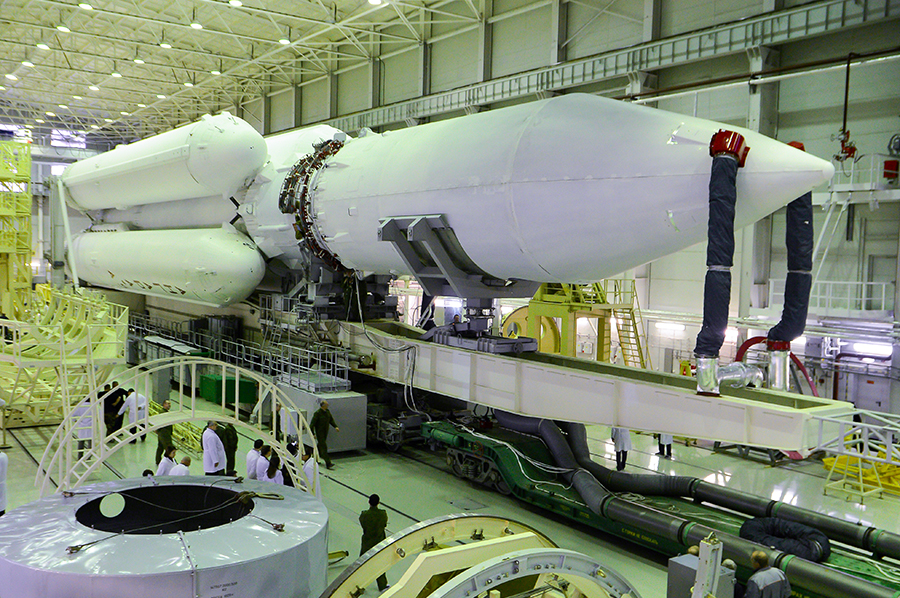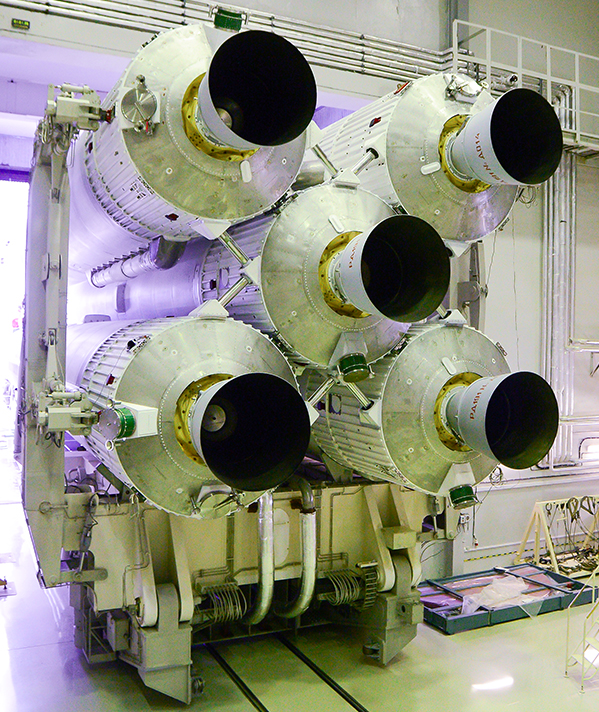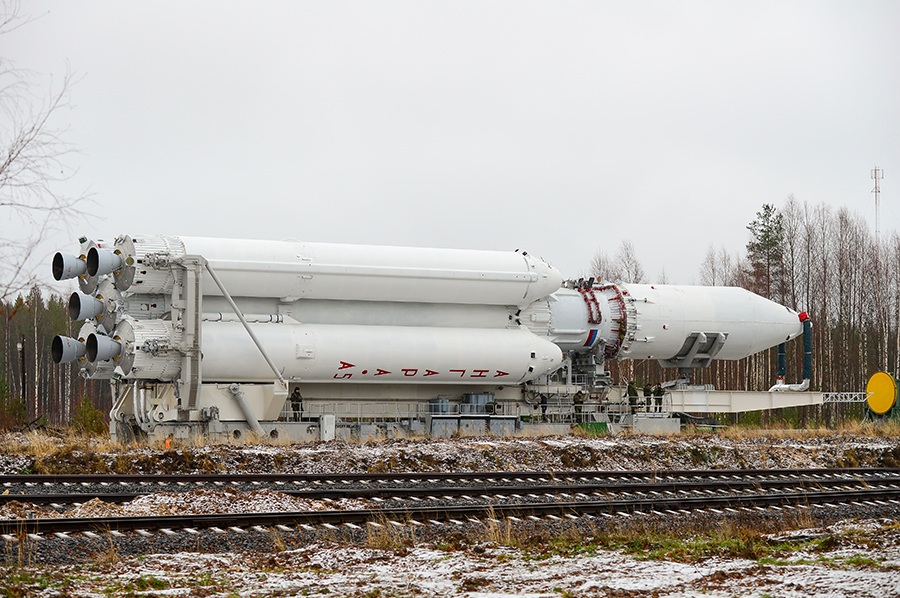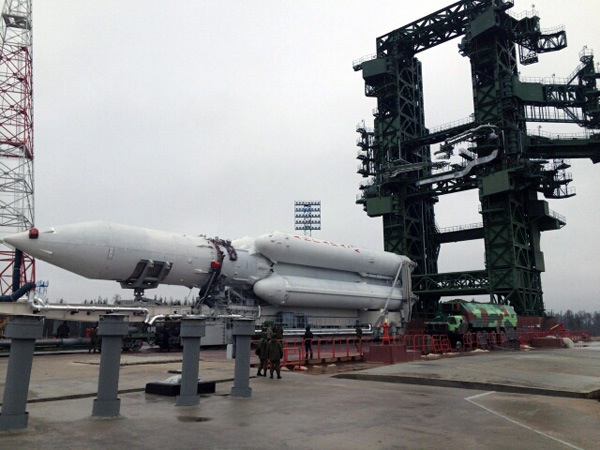Angara 5 rollout
Roughly equivalent to the Delta IV Heavy, and half the LEO lift of Falcon Heavy (which is slated for mid-2015)




Roughly equivalent to the Delta IV Heavy, and half the LEO lift of Falcon Heavy (which is slated for mid-2015)
Russia’s new heavy-lifter rolled to launch pad
Several weeks ahead of a planned liftoff in late December, the biggest new Russian rocket to fly in a generation rolled to its launch pad at the Plesetsk Cosmodrome in northern Russia earlier this month for preflight testing.
The heavy-lift Angara 5 rocket is due to replace Russia’s Proton launcher to haul the country’s heaviest satellites into orbit. Manufactured by the Khrunichev State Research and Production Space Center — the Proton’s prime contractor — the Angara 5 is also slated to compete for commercial satellite launches on the global market.
Russian news agencies have reported the rocket’s first liftoff is scheduled for around Dec. 25. It will carry a simulated payload into geostationary transfer orbit stretching more than 20,000 miles above Earth, a common destination for communications satellites.
Weighing 773 metric tons (852 tons) when filled with kerosene, liquid oxygen and hypergolic propellants, the Angara 5 is the biggest Russian launcher to debut since the Energia rocket for the Soviet Union’s Buran space shuttle flew in the late 1980s.
The booster is formed of five rocket cores each fitted with an RD-191 engine built by NPO Energomash of Khimki, Russia. Engineers derived the single-chamber RD-191 engine from the four-nozzle RD-171 and dual-chamber RD-180 engines flying on the Zenit and Atlas 5 launchers.
When it is cleared for liftoff, the Angara 5 rocket’s five kerosene-fueled RD-191 engines will generate nearly 2.2 million pounds of thrust to power the massive booster off the launch pad at Plesetsk, a military-run space base about 500 miles north of Moscow.
>
A second stage RD-0124A engine and a Breeze M upper stage — borrowed from Russia’s Soyuz 2-1b and Proton rockets — will finish the job.
The Angara 5 can place up to 24.5 metric tons — about 54,000 pounds — into a 120-mile-high orbit. On missions with communications satellites heading for geostationary transfer orbit, an Angara 5 rocket can lift up to 5.4 metric tons, or about 11,900 pounds, according to Khrunichev.
>
Several weeks ahead of a planned liftoff in late December, the biggest new Russian rocket to fly in a generation rolled to its launch pad at the Plesetsk Cosmodrome in northern Russia earlier this month for preflight testing.
The heavy-lift Angara 5 rocket is due to replace Russia’s Proton launcher to haul the country’s heaviest satellites into orbit. Manufactured by the Khrunichev State Research and Production Space Center — the Proton’s prime contractor — the Angara 5 is also slated to compete for commercial satellite launches on the global market.
Russian news agencies have reported the rocket’s first liftoff is scheduled for around Dec. 25. It will carry a simulated payload into geostationary transfer orbit stretching more than 20,000 miles above Earth, a common destination for communications satellites.
Weighing 773 metric tons (852 tons) when filled with kerosene, liquid oxygen and hypergolic propellants, the Angara 5 is the biggest Russian launcher to debut since the Energia rocket for the Soviet Union’s Buran space shuttle flew in the late 1980s.
The booster is formed of five rocket cores each fitted with an RD-191 engine built by NPO Energomash of Khimki, Russia. Engineers derived the single-chamber RD-191 engine from the four-nozzle RD-171 and dual-chamber RD-180 engines flying on the Zenit and Atlas 5 launchers.
When it is cleared for liftoff, the Angara 5 rocket’s five kerosene-fueled RD-191 engines will generate nearly 2.2 million pounds of thrust to power the massive booster off the launch pad at Plesetsk, a military-run space base about 500 miles north of Moscow.
>
A second stage RD-0124A engine and a Breeze M upper stage — borrowed from Russia’s Soyuz 2-1b and Proton rockets — will finish the job.
The Angara 5 can place up to 24.5 metric tons — about 54,000 pounds — into a 120-mile-high orbit. On missions with communications satellites heading for geostationary transfer orbit, an Angara 5 rocket can lift up to 5.4 metric tons, or about 11,900 pounds, according to Khrunichev.
>







Comment